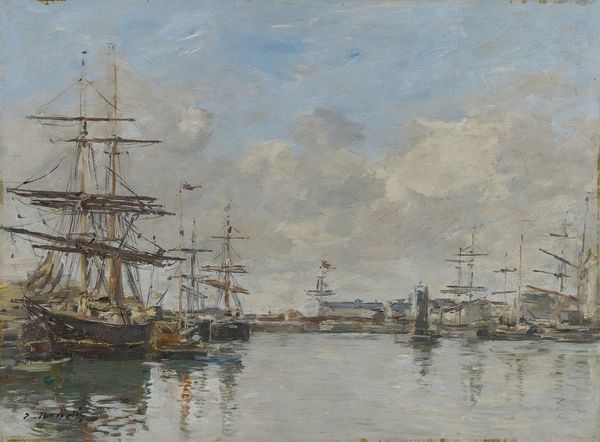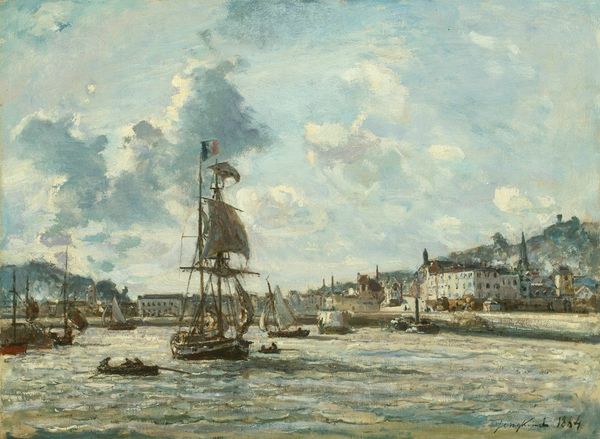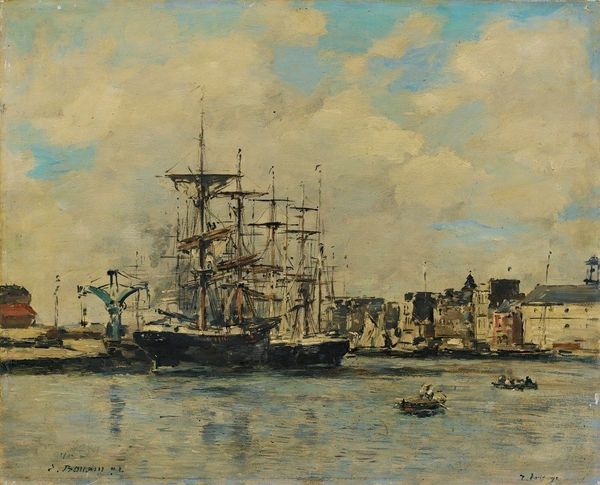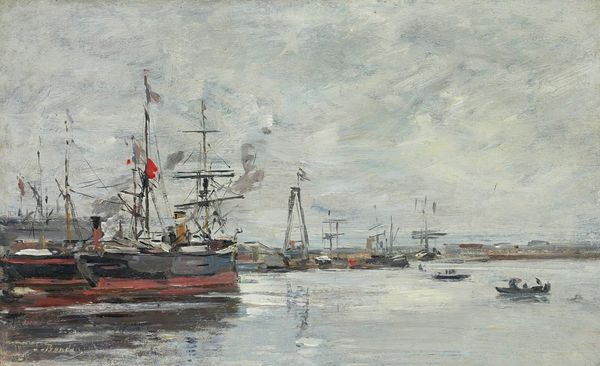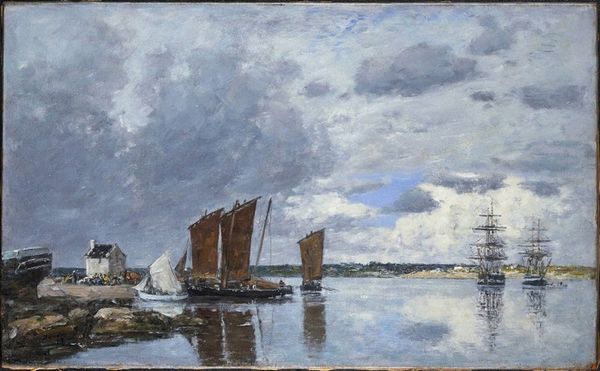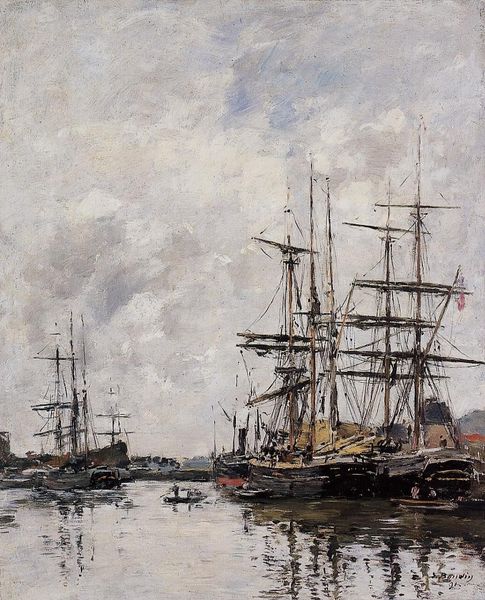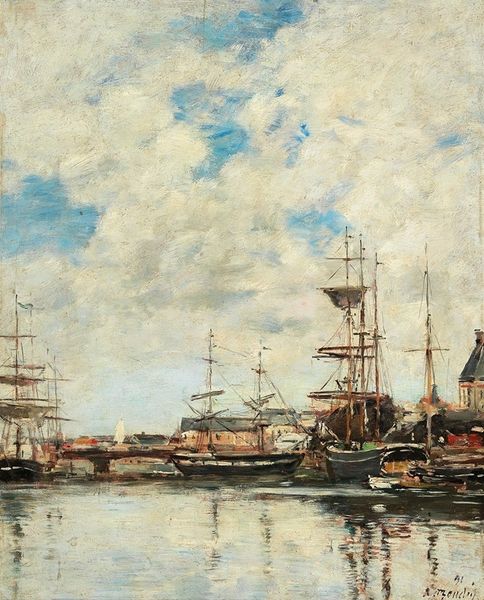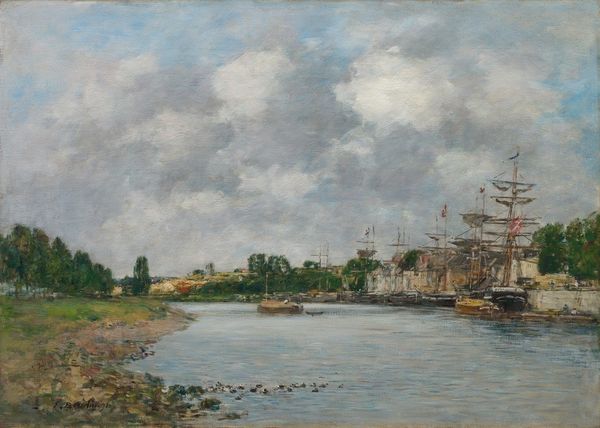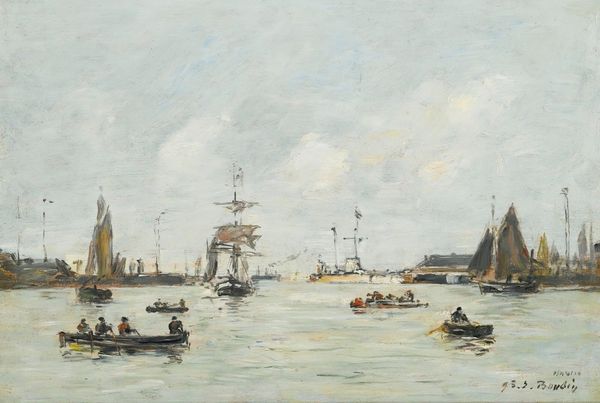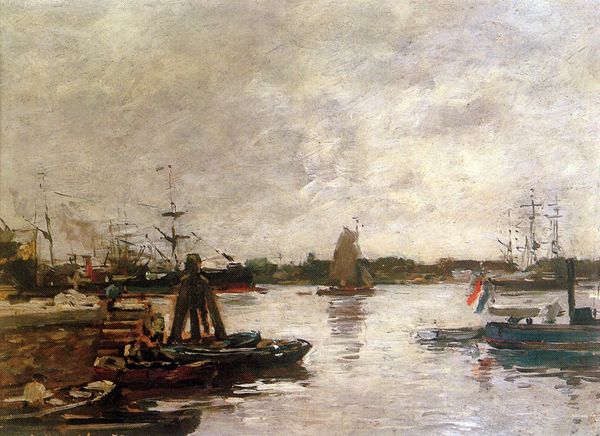
plein-air, oil-paint
#
impressionism
#
impressionist painting style
#
plein-air
#
oil-paint
#
landscape
#
impressionist landscape
#
oil painting
#
cityscape
Copyright: Public Domain: Artvee
Editor: This is "Bateaux À L’ancre Dans Le Port, Portrieux" by Eugène Boudin, created in 1873 using oil paint in the plein-air style. Looking at this, I'm immediately drawn to the contrast between the heavy, looming clouds and the delicate masts of the ships. What cultural memories might this kind of scene evoke for a viewer of that era? Curator: A harbor scene like this would resonate deeply. Ships, then, were vital links to the wider world. They symbolize not just trade and travel, but also dreams of adventure and potential anxieties tied to voyages and returns. Do you notice how Boudin captures the light on the water? Editor: Yes, it’s almost as if the water reflects both the sky and the viewer's own sense of anticipation or unease. It makes me wonder if those leaving on these boats felt torn between fear and excitement about the prospect of their journeys, and what awaited them in new lands? Curator: Precisely. Consider also the anchored ships – a powerful image of both readiness and stillness. Are they resting before departure, or have they returned, burdened by worldly experiences, to the safety of the port? Editor: So the painting isn’t just about a place, but also about transitional spaces in human experience – of coming and going, and what those journeys signify. That really enriches my understanding. Thank you. Curator: Absolutely. By noticing those symbols we perceive and inherit the cultural fabric. It allows a new sense of continuity over time.
Comments
No comments
Be the first to comment and join the conversation on the ultimate creative platform.
